 |
New York Architecture Images-New York Architects Richard Rogers |
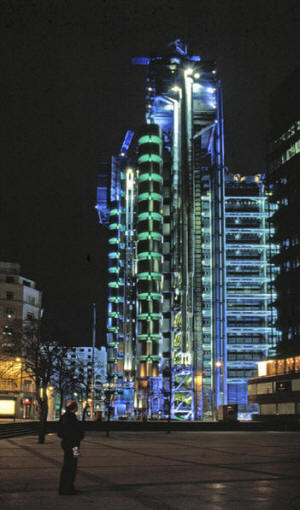 Lloyd's building in 1991 Aerial view of the Millennium Dome 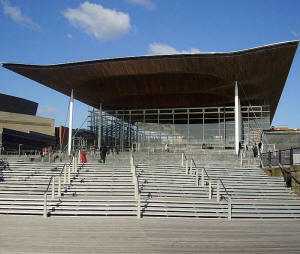 Senedd, National Assembly for Wales 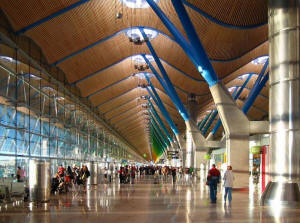 Madrid-Barajas Airport terminal 4 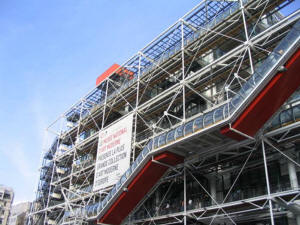 Centre Georges Pompidou 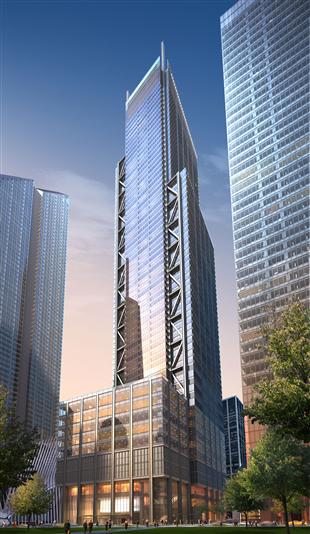 Three World Trade Center 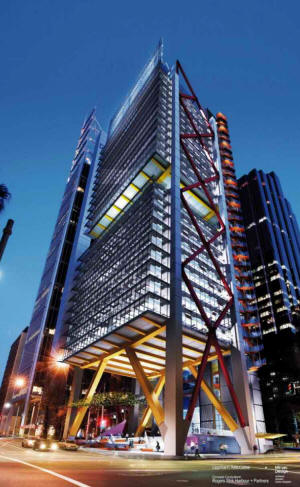 8 Chifley Square Sydney |
|
|
The British architect Richard Rogers earned a reputation as a high-tech
iconoclast with the completion of the 1977 Pompidou Center, with its
exposed skeleton of brightly colored tubes for mechanical systems. The
museum turned the architecture world upside down and brought him global
fame. According to the Pritzker jury, which awarded him architecture's highest honor in 2007, the Pompidou -- a collaboration with Renzo Piano -- "revolutionized museums, transforming what had once been elite monuments into popular places of social and cultural exchange, woven into the heart of the city." Similarly, his 1986 Lloyd's office building in the heart of the London financial district features an inside-out design, with a soaring atrium surrounded by external escalators and elevators. Other high-profile projects by Lord Rogers include the sprawling Millennium Dome in Greenwich, England, suspended from steel masts and secured by steel cable (1999), and the law courts in Bordeaux, France (1998) -- seven "pods" clad in cedar wood surrounded by glass walls under an undulating copper roof. Another of Lord Rogers' major undertakings was the $2.2 billion new terminal at Barajas International Airport in Madrid (2005), featuring waves formed by wings of prefabricated steel and a roof covered in bamboo strips. Earlier he designed Terminal 5 at Heathrow Airport in London. 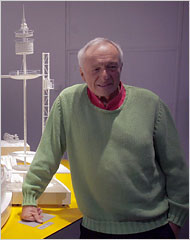 Mr. Rogers's newer buildings in New York include the expansion of the Jacob K. Javits Convention Center on the Far West Side of Manhattan and a complex at Silvercup Studios in Long Island City, Queens. His projects are a tower at the World Trade Center and a redesign of the East River waterfront. Not all of these designs have been well received. Appraising Lord Rogers's vision for the Javits Center in The New York Times, Nicolai Ouroussoff said its boxy design was "a decent but not particularly dazzling work of architecture." But he offered glowing praise for Lord Rogers's reimagination of the East Side waterfront, designed in collaboration with Gregg Pasquarelli of SHoP Architects and the landscape architect Ken Smith. Over the years, Lord Rogers has become well known for his philosophy as well as for his buildings. His London firm, Richard Rogers Partnership, has adopted bylaws specifying that the directors get no more than six times the salary of the lowest-paid architect. "I don't believe in the ownership of work," he said. He has also been in the forefront of the sustainable architecture movement, designing buildings with the environment in mind. His building for the National Assembly for Wales in Cardiff halved the parliament's energy consumption, he said; as chief adviser on architecture and urbanism to the mayor of London he has encouraged the construction of more compact developments around mass transportation. Lord Rogers was born in Florence, Italy, in 1933. His father was a doctor, and his mother had a great interest in modern design, he said. In 1938 the Rogers family moved to England, where he struggled through the public school system; many years later he received a diagnosis of dyslexia. "I was called backward," Lord Rogers said. "We didn't know dyslexia." Just as he was completing secondary school in 1951 -- and seriously considering a career in dentistry -- the Festival of Britain introduced him to modern architecture. He was captivated by some of the temporary buildings thrown up along the South Bank. A two-year stint in the British military took him to Trieste, where he became acquainted with the work of his father's cousin Ernesto Rogers, one of Italy's prominent architects, and he decided to attend the Architectural Association School in London. In 1961, Mr. Rogers traveled to Yale on a Fulbright scholarship to pursue a master's degree in architecture. There he developed an interest in Frank Lloyd Wright ("my first god," he has said). After working for Skidmore, Owings & Merrill in New York, he returned to England to start his first practice, Team 4, with his first wife, Su Brumwell; Norman Foster; and Wendy Cheeseman. He and Mr. Foster each struck out on their own in 1967. By 1971 he had joined forces with Renzo Piano to create Piano & Rogers. That year they won the commission to design the Pompidou. The two architects split in 1978. Over the years, Lord Rogers has racked up plenty of accolades, including a life peerage in 1996. But the honors have not convinced him that architects deserve the rock-star status that so many enjoy. Richard Rogers Partnership employs more than 100 people, he pointed out, and he could not achieve what he does without them. "You are leading a team," Lord Rogers said. "I've never really understood how architects can think of themselves as an individual. In June 2009, Lord Rogers accused the Prince of Wales of "an abuse of power" and "unconstitutional behavior" after the prince complained about the architect's designs for a London housing development. He had been working on plans for 552 homes to be built on the site of a former army barracks in the Chelsea district of London. The project was being managed by a division of Qatari Diar, the property investment arm of the Qatar emirate. Qatar withdrew its planning application for the design after the prince wrote to Sheikh Hamad bin Jassim al-Thani, the prime minister of Qatar, saying the designs were "unsuitable" for a site so close to the Royal Hospital, designed by Christopher Wren. The Prince's Foundation for the Built Environment, a charity that Prince Charles oversees as president, has been appointed to help produce a new design for the project. It is not the first time that Charles, known for his pronouncements about architecture, has intervened. Thus, the tensions between those who would modernize and those who would simply restore appear to continue. ''He's not a bad man; he just wanted to stop time,'' Lord Rogers once said of the prince. Source- http://topics.nytimes.com/topics/reference/timestopics/people/r/richard_rogers/index.html |
|
|
links |
|